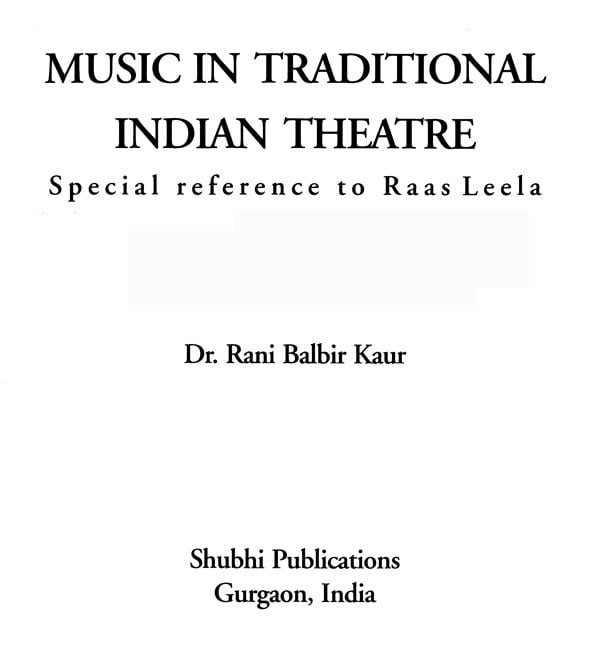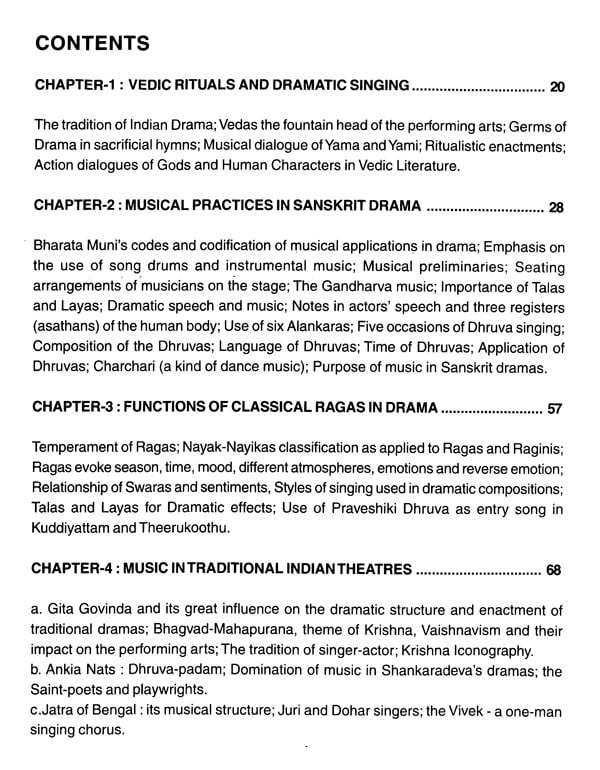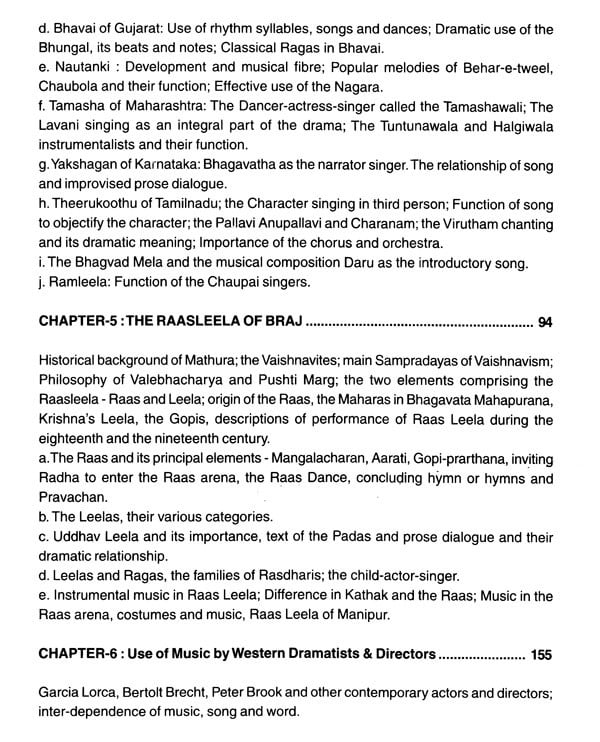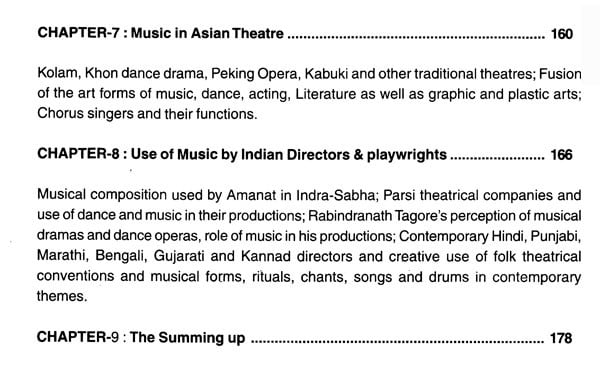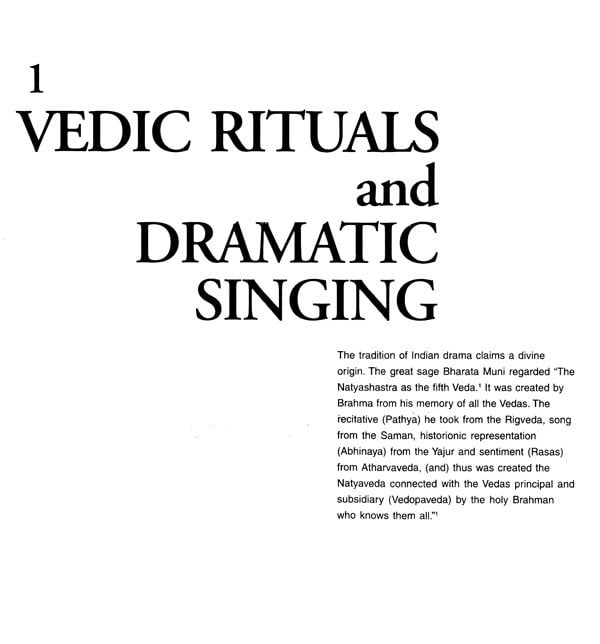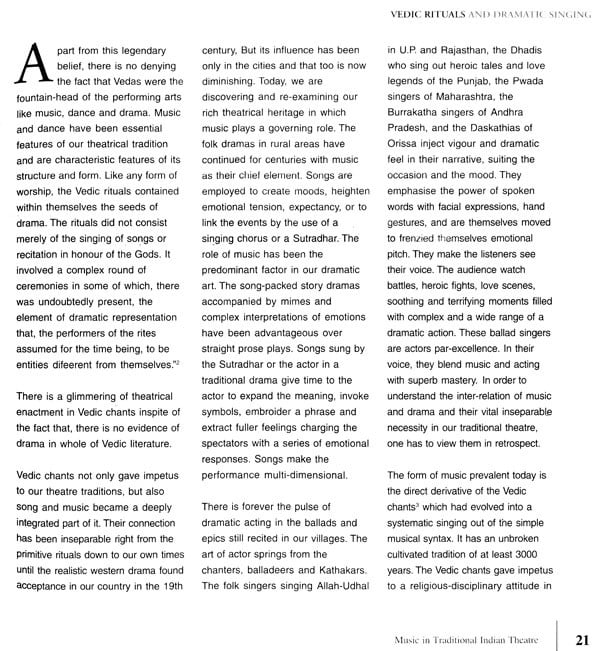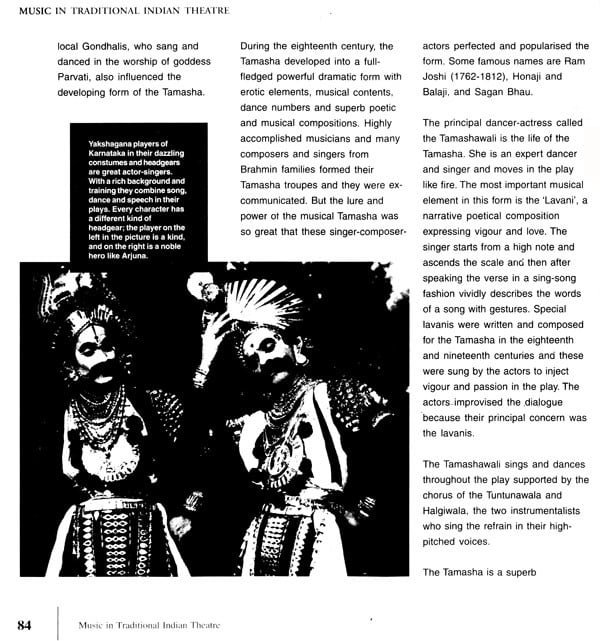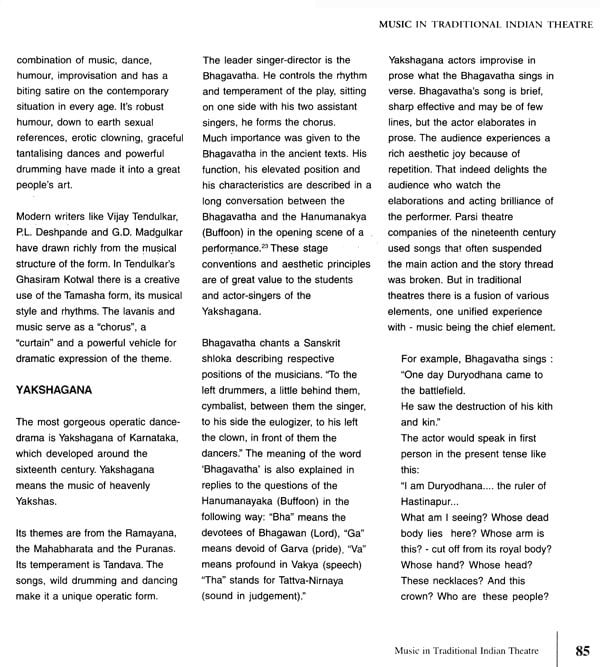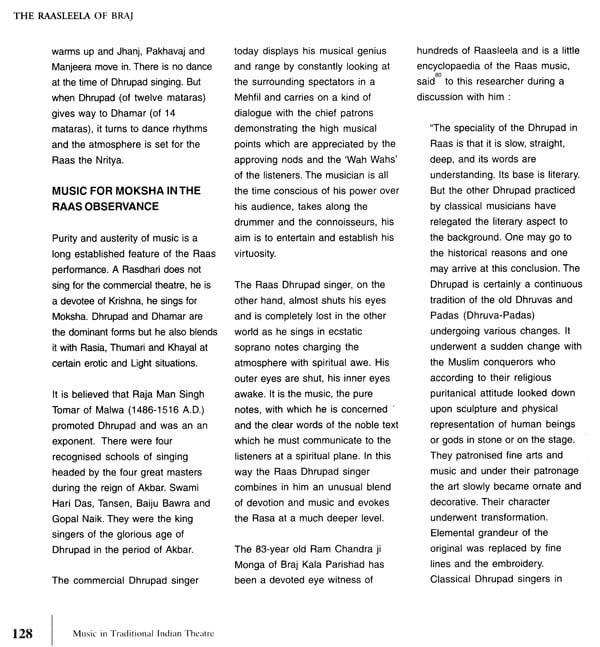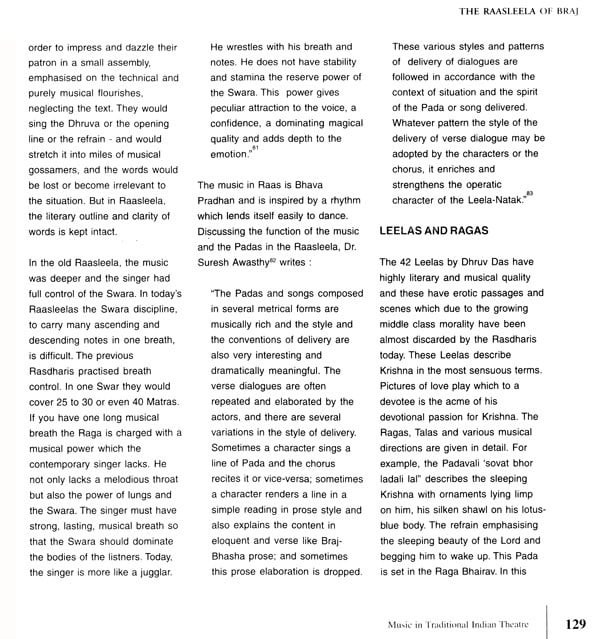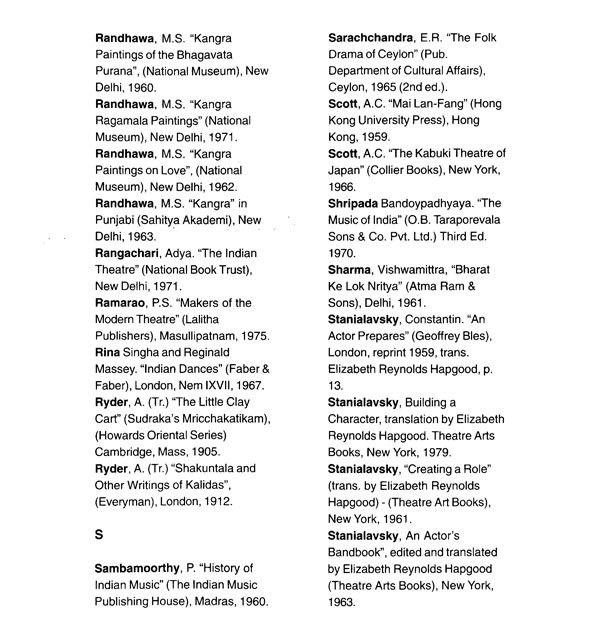
Music in Traditional Indian Theatre- Special Reference to Rasa Leela
Book Specification
| Item Code: | UBE987 |
| Author: | Rani Balbir Kaur |
| Publisher: | Shubhi Publications, Gurgaon |
| Language: | English |
| Edition: | 2006 |
| ISBN: | 9798187226993 |
| Pages: | 198 (Throughout B/w Illustrations) |
| Cover: | HARDCOVER |
| Other Details | 9.00 X 8.50 inch |
| Weight | 610 gm |
Book Description
In my survey of traditional Indian theatre, realised it was impossible to find a living theatre in any region which does not use music folk, classical or semi-classical, as part of their performance. The multifarious forms, difficult to codify or enumerate, differ from region to region and even in the same region they vary in their chorus, singing-styles (Bandish), compositions and use of stringed and percussion instruments.
Music is an integral part of the total dramatic world of India, an essential element of the traditional theatre forms like the Jatra of Bengal, Nautanki and Swang of North India, Bhavai of Gujarat, Tamasha of Maharashtra, Yakshagan of Karnataka, Therukoothu of Tamilnadu, Ramleela and Raasleela the cycle and plays of Rama and Krishna themes of Uttar Pradesh, classical dance dramas like Kathakkali, and the only Sanskrit drama Kuddiattam still performed in Kerala in the light of oll "Mashals' (torches) on the mud splattered stage by the ancestral Chakyars. All these forms use music-vocal and instru mental, chants, rhythmic groans and stylized speech patterns with a definite dramatic impact.
In the ancient hymn chanting and the ballad tradition the protagonist was a singer-performer. 'Daskathias' of Orissa, 'Burrakatha' performers of Andhra, 'Ahla-Udhal' singers of Rajasthan and Uttar Pradesh, Dhadis' of Punjab are age-old performers who preceded drama and paved a way for theatre. Simple songs of narration, invocation and descriptive passages in the epics and chanting of religious mantras are made vivid and dramatically intense by the singer performer. The art of the actor is hidden in these minstrels, who emotionalize and charge the listeners with a graphic portrayal of the characters and events, etching out the scenes with gestures and facial expressions ranging from subtle and subdued to the heightened loud and terrifying. The Kathakar in a village is in fact an actor-singer, combining in him the most ancient art of story-telling and impersonation by pure 'Abhinaya'.
**Contents and Sample Pages**
